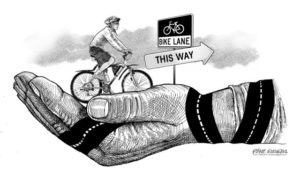
It is hoped that a study on the viability of pedestrianization of Cebu City’s downtown area would yield valuable data that would help both City Hall and city residents decide and employ the best possible solutions to both traffic congestion and air pollution there.
This early, the proposal had early supporters like Cebu City Hall administrator Nigel Paul Villarete and NEDA-7 Regional Director Efren Carreon and even business leaders like Robert Go, president of the Philippine Retailers Association of the Philippines-Cebu chapter.
Pedestrianization is of course being supported and lobbied for by eco advocates like lawyer Antonio Oposa and proponents of the so-called “Road Revolution” that pushed for the closure of roads at certain times to allow bikers and pedestrians free and unhampered use of the streets a few years ago.
The NEDA study will certainly be used by these proponents to lobby for more bike lanes which would entail not only some costly road works but also an eventual transformation of the public mindset which is more enduring and a lot more difficult to achieve.
While pedestrianization had been pursued in First World countries and even some developing countries, it didn’t happen overnight.
And therein lies the truth and reality that this NEDA study will have to acknowledge and answer as it finalizes its results and is disclosed to the public.
It is a reality that people who’ve dealt with traffic directly, like Councilor Dave Tumulak and officials of the Cebu City Transportation Office, recognize and resolve directly on a daily basis and their input should be added into the study in order to produce solutions that are both workable and sustainable.
Councilor Tumulak proposed that alternative interior roads should be included for use of both public utility vehicles and private motorists if pedestrianization will be pursued full time.
That’s a practical solution that ardent advocates of the so-called Road Revolution and now proponents of pedestrianization either failed to consider or left alone to local officials as they were concerned more with closing the roads and opening them to bikers and their companions rather than thinking how this would impact on the riding public or those who would be inconvenienced by this activity.
We trust that all considerations will be factored in, including persuading both the commuters and pedestrians about the benefits and viability of pedestrianization.
Pedestrianization may be idea whose time has come but if not planned, promoted and implemented carefully, it may well be bitter medicine being rammed down on others’ throats and thus prove unwelcome.